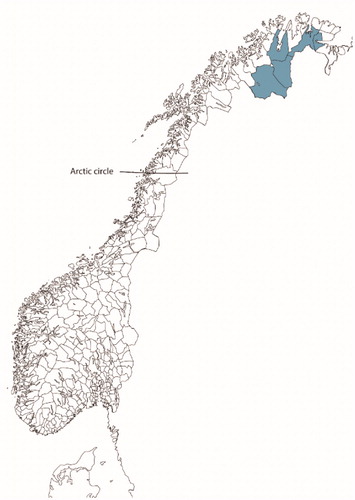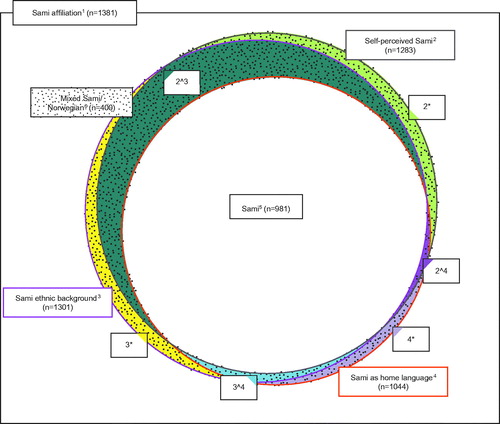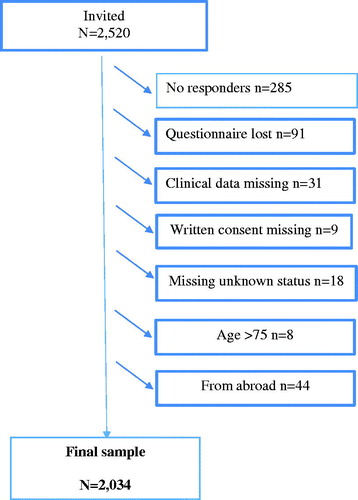Figures & data
Figure 1. Map of Norway. The municipalities included in the survey are marked in blue (Nesseby, Tana, Prosanger, Karasjok and Kautokeino).

Table 1. List of self-reported information collected in the questionnaire.
Table 2. Overview of clinical parameters.
Table 3. Participation by municipality.
Table 4. Selected characteristics for the study sample n = 2034b.
Figure 3. Distribution of sub-populations among participants with Sámi affiliation: The Dental Health in the North Study. 1 Sámi affiliation is defined as Sámi language being spoken at home by at least one of the grandparents, parents or the respondent, or Sámi ethnic background reported for respondent or a parent, or that the respondent considers himself/herself as Sámi (n = 1381). 2 Self-perceived Sámi is defined as yes to the question: I consider myself Sámi (n = 1283). 3 Sámi ethnic background is defined as yes to the question: My ethnic background is Sámi (n = 1301). 4 Sámi as home language is defined as yes to the question: My home language is Sámi (n = 1044). 5 Answered yes to all three questions in footnote: 2, 3 and 4 (n = 981). 6 ‘Mixed Sámi/Norwegian’ is defined as yes to one or two of the question(s) in footnote 2 or 3 or 4 (2*+3*+4*+2∧3 + 2∧4 + 3∧4) (n = 400). 2*: Reported only self-perceived Sámi (n = 48). 3*: Reported only Sámi ethnic background (n = 53). 4*: Reported only Sámi as home language (n = 14). 2∧3: Reported Sámi ethnic background and self-perceived Sámi (n = 236). 2∧4: Reported self-perceived Sámi and Sámi as home language (n = 18). 3∧4: Reported Sámi ethnic background and Sámi as home language (n = 31).

Table 5. Self-reported ethnicity, self-perceived ethnicity and language at home according to our ethnic definition.Table Footnotea

